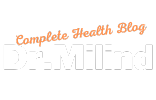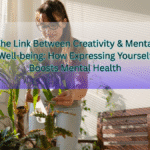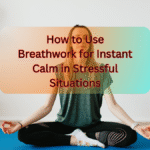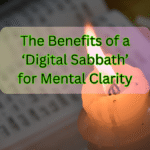Blue Light Affects Your Health : A Digital Age Survival Guide
Introduction: The Glowing Elephant in the Room
You’re cozied up in bed, scrolling through TikTok under the blankets, when suddenly your eyes feel like sandpaper. By morning, you’re groggy, irritable, and reaching for a third coffee. Sound familiar? You’ve just met blue light—the invisible force hijacking your sleep, focus, and long-term health. But before you swear off screens forever (we know you won’t), let’s explore what blue light really does to your body and how to strike a balance in our tech-driven world. Spoiler: You can Netflix and chill without sabotaging your wellness.
What is Blue Light? Sunlight’s Double-Edged Cousin
Blue light is a high-energy visible (HEV) wavelength found naturally in sunlight and artificially in screens, LEDs, and fluorescent bulbs. During daylight, it boosts alertness and mood—but at night, it wreaks havoc.

Key sources:
- Natural: Sunlight (the largest source).
- Artificial: Phones, computers, TVs, tablets, LED lights, and even energy-efficient bulbs.
Unlike UV rays, blue light penetrates deep into the eye, reaching the retina. This isn’t inherently bad—it’s the timing and dosage that matter.
How Blue Light Disrupts Your Body: Beyond Tired Eyes
1. Sleep Sabotage: The Melatonin Heist
The science: Blue light suppresses melatonin, the hormone that tells your body it’s bedtime. A 2018 Harvard study found that blue light exposure at night delays melatonin production by 3 hours compared to dim light (Harvard Health, 2018).
Effects:
- Difficulty falling asleep.
- Reduced REM sleep (critical for memory and mood).
- Increased risk of insomnia and chronic fatigue.
2. Digital Eye Strain: The 21st-Century Epidemic
The science: Staring at screens reduces blink rate by 66%, leading to dry eyes, blurred vision, and headaches (American Optometric Association, 2023).
Symptoms:
- “Computer vision syndrome”: Redness, dryness, and eye fatigue.
- Increased nearsightedness (myopia) in kids and teens.
3. Long-Term Risks: Retina Under Siege
The science: Prolonged exposure may damage retinal cells, accelerating age-related macular degeneration (AMD) (NIH, 2019). While research is ongoing, prevention is key.
4. Mood & Metabolism: The Hidden Connections
- Circadian disruption links blue light to depression and weight gain.
- Shift workers exposed to nighttime light have higher diabetes and obesity rates (Sleep Foundation, 2022).
Video Credits
5 Practical Ways to Protect Yourself (Without Ditching Tech)
1. Embrace Blue Light Filters
- Screen shields: Apply anti-blue light screen protectors to phones and laptops.
- Software solutions: Enable “Night Shift” (iOS) or “Night Light” (Android/Windows) to warm screen tones after sunset.
- Blue light glasses: Opt for lenses with a amber or clear coating blocking 30-50% of HEV light.
Pro Tip: Look for glasses with a 400-450nm blocking range for optimal protection.
2. Master Screen Timing
- The 2-1 Rule: Avoid screens 2 hours before bed. Can’t manage that? Aim for 1 hour.
- Morning boost: Get 10-30 minutes of natural sunlight to reset your circadian rhythm.
3. Optimize Your Environment
- Warm lighting: Swap cool-white LEDs for warm (2700K) bulbs in bedrooms.
- Layer lighting: Use dimmers or lamps instead of overhead lights at night.
- Screen distance: Hold phones 16-18 inches from your face; position monitors 20-30 inches away.
4. Nourish Your Eyes
- Diet hacks: Load up on lutein and zeaxanthin—antioxidants in kale, eggs, and oranges that protect retinal cells.
- Artificial tears: Use preservative-free eye drops for dryness.
- 20-20-20 Rule: Every 20 minutes, look at something 20 feet away for 20 seconds.
5. Reclaim Your Nights
- Red light therapy: Swap bedtime scrolling with a red-light lamp (red wavelengths don’t suppress melatonin).
- Analog alternatives: Read a physical book or journal before bed.
Debunking Blue Light Myths
- Myth: “All blue light is bad.”
Truth: Daytime blue light boosts alertness and cognitive function—it’s nighttime exposure that’s problematic. - Myth: “Dark mode fixes everything.”
Truth: Dark mode reduces glare but doesn’t block blue light—pair it with a filter. - Myth: “Kids aren’t affected.”
Truth: Children’s eyes absorb more blue light than adults’. Set screen curfews.
When to Seek Help
Consult an eye doctor if you experience:
- Chronic headaches or eye pain.
- Blurred vision that doesn’t improve with breaks.
- Signs of AMD (e.g., distorted central vision).
Conclusion: Shine a Light on Healthier Habits
Blue light isn’t a villain—it’s a tool. By tweaking when and how you use screens, you can harness its benefits (like midday focus) while shielding your sleep and sight. Remember, small changes—like swapping late-night Netflix for a podcast—add up to big wins for your health.
Your Next Step: Try one tip from this guide tonight—maybe dim those lights or charge your phone outside the bedroom. Share your experiment in the comments! For more tech-wellness hacks, [subscribe to our newsletter] and join our screen-savvy community.











